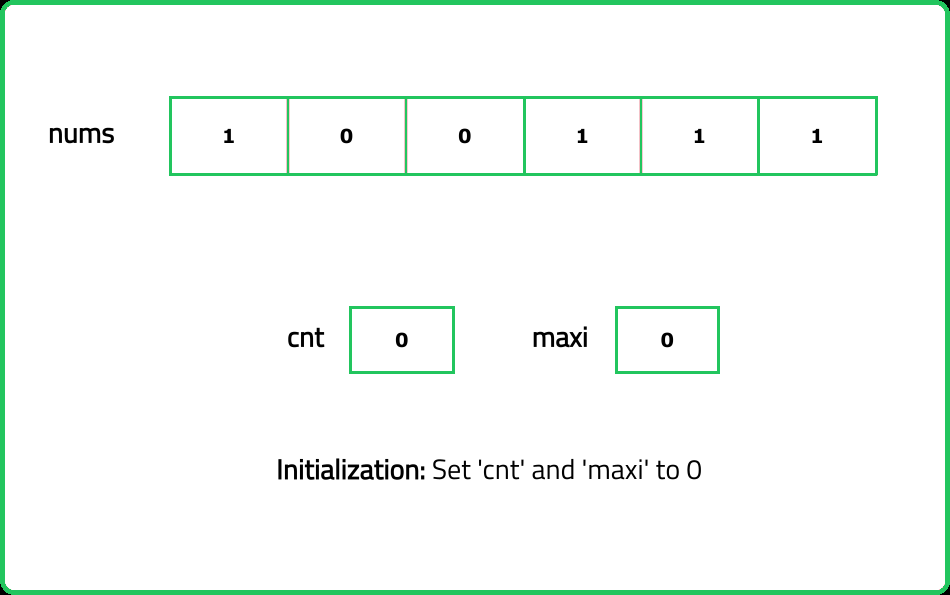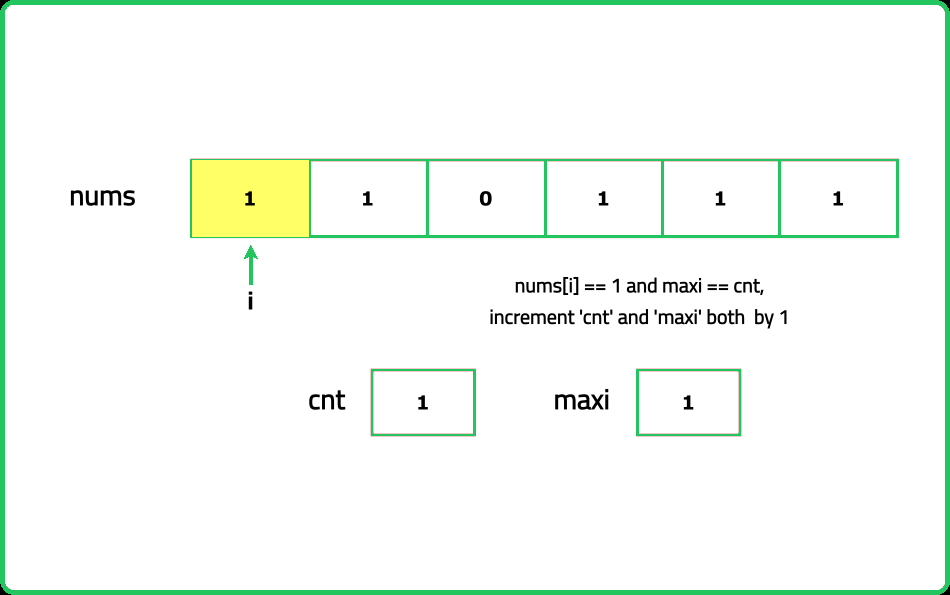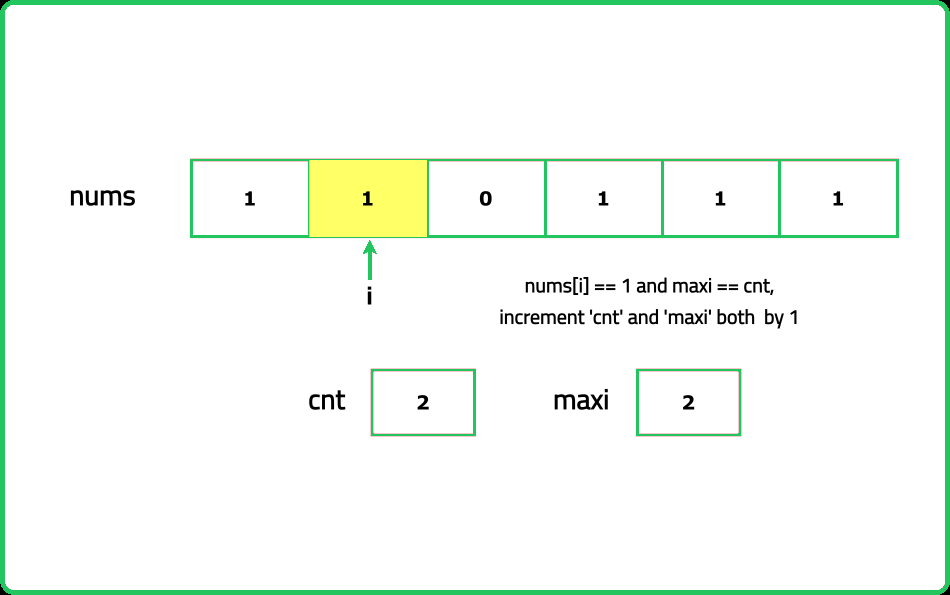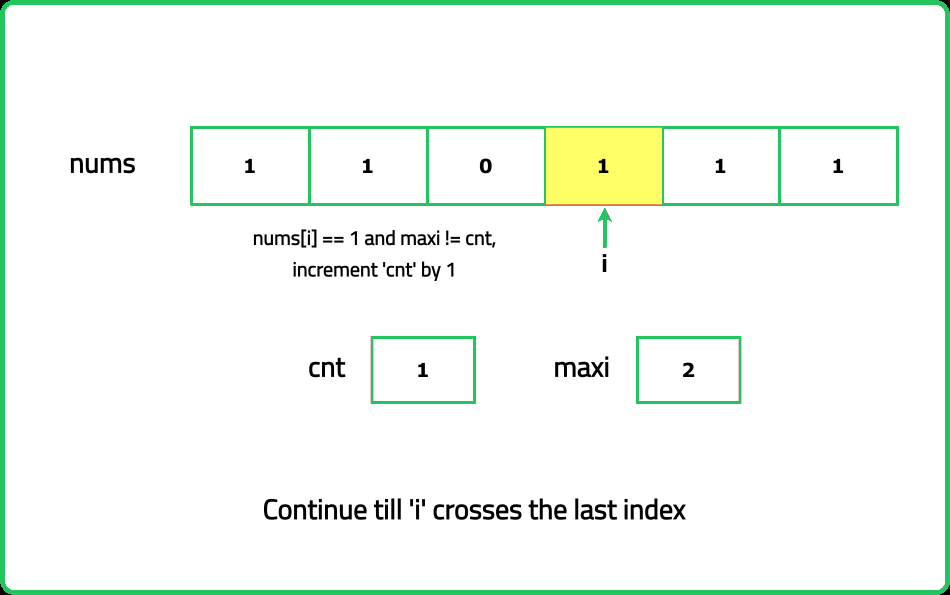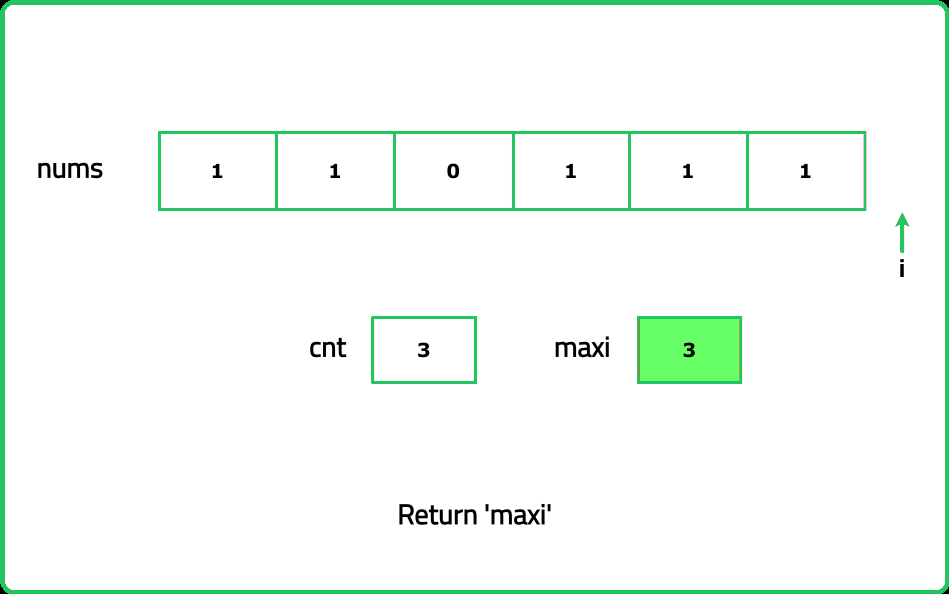Maximum Consecutive Ones
Arrays
Fundamentals
Easy
- A fun and practical application of this problem exists in data compression techniques, used in various aspects of software development
- In particular, a variant of this problem is employed in Run-Length Encoding (RLE) that is a simple form of data compression where runs of data are stored as a single data value and count
- It counts the occurrences of consecutive 1s (or 0s), which is similar to the given problem
- RLE is used in graphics files formats including BMP, TIFF, and in certain PDF compression schemes
Given a binary array nums, return the maximum number of consecutive 1s in the array.
A binary array is an array that contains only 0s and 1s.
Examples:
Input: nums = [1, 1, 0, 0, 1, 1, 1, 0]
Output: 3
Explanation: The maximum consecutive 1s are present from index 4 to index 6, amounting to 3 1s
Input: nums = [0, 0, 0, 0, 0, 0, 0, 0]
Output: 0
Explanation: No 1s are present in nums, thus we return 0
Input: nums = [1, 0, 1, 1, 1, 0, 1, 1, 1]
Constraints
- 1 <= nums.length <= 105
- nums[i] is either 0 or 1.
Hints
- Traverse the array while keeping a running count of consecutive 1s. Reset the count to 0 whenever a 0 is encountered.
- Maintain a variable to track the maximum count of consecutive 1s observed during traversal.
Company Tags
Byju's
Oracle
Mastercard
Bain & Company
Splunk
HashiCorp
Reddit
Zynga
Micron Technology
OYO Rooms
Roche
Activision Blizzard
Uber
Ernst & Young
Nutanix
ARM
American Express
Morgan Stanley
Philips Healthcare
JPMorgan Chase
Pinterest
Swiggy
Optum
Stripe
Wayfair
TCS
Cognizant
Accenture
Infosys
Capgemini
Wipro
Amazon
